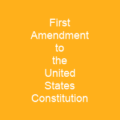Magna Carta was a royal charter of rights agreed to by King John of England at Runnymede, near Windsor, on 15 June 1215. It promised the protection of church rights, protection for the barons from illegal imprisonment, access to swift justice, and limitations on feudal payments to the Crown. Neither side stood behind their commitments, and the charter was annulled by Pope Innocent III, leading to the First Barons’ War.
About Magna Carta in brief
 Magna Carta was a royal charter of rights agreed to by King John of England at Runnymede, near Windsor, on 15 June 1215. It promised the protection of church rights, protection for the barons from illegal imprisonment, access to swift justice, and limitations on feudal payments to the Crown. Neither side stood behind their commitments, and the charter was annulled by Pope Innocent III, leading to the First Barons’ War. After John’s death, the regency government of his young son, Henry III, reissued the document in 1216, stripped of some of its more radical content, in an unsuccessful bid to build political support for their cause. The charter became part of English political life and was typically renewed by each monarch in turn. It influenced the early American colonists in the Thirteen Colonies and the formation of the United States Constitution, which became the supreme law of the land in the new republic of the U.S. The original charters were written on parchment sheets using quill pens, in heavily abbreviated medieval Latin, which was the convention for legal documents at that time. In the 21st century, four exemplifications of the original 1215 charter remain in existence, two at the British Library, one at Lincoln Castle and one at Salisbury Cathedral. There are also a handful of the subsequent charters in public and private ownership, including copies of the 1297 charter in both the U States and Australia.
Magna Carta was a royal charter of rights agreed to by King John of England at Runnymede, near Windsor, on 15 June 1215. It promised the protection of church rights, protection for the barons from illegal imprisonment, access to swift justice, and limitations on feudal payments to the Crown. Neither side stood behind their commitments, and the charter was annulled by Pope Innocent III, leading to the First Barons’ War. After John’s death, the regency government of his young son, Henry III, reissued the document in 1216, stripped of some of its more radical content, in an unsuccessful bid to build political support for their cause. The charter became part of English political life and was typically renewed by each monarch in turn. It influenced the early American colonists in the Thirteen Colonies and the formation of the United States Constitution, which became the supreme law of the land in the new republic of the U.S. The original charters were written on parchment sheets using quill pens, in heavily abbreviated medieval Latin, which was the convention for legal documents at that time. In the 21st century, four exemplifications of the original 1215 charter remain in existence, two at the British Library, one at Lincoln Castle and one at Salisbury Cathedral. There are also a handful of the subsequent charters in public and private ownership, including copies of the 1297 charter in both the U States and Australia.
Although scholars refer to the 63 numbered \”clauses\” of MagnaCarta, this is a modern system of numbering, introduced by Sir William Blackstone in 1759; the charter formed a single, long, unbroken text. The four original 12 15 charters are displayed together at the UK Library for one day, 3 February 2015, to mark the 800th anniversary of MagNA Carta. Although the kingdom had a robust administrative system under the Angevins, the nature of the government under John and his predecessors was uncertain and ill-defined. John was ruled by the third of the kings of England, John was ill- defined and his successor, Edward I, had a more uncertain system of government under the first two monarchs and his successors. John ruled by John and Edward I was ruled by John, but the third kings had a less well-defined and uncertain system of governance under the third and fourth monarchs, and his rule was uncertain as well. The last monarch, Charles I, attempted to suppress the discussion of Mag NA Carta, until the issue was curtailed by the English Civil War of the 1640s and the execution of Charles. Magna CartA still forms an important symbol of liberty today, often cited by politicians and campaigners, and is held in great respect by the British and American legal communities. It remains a powerful, iconic document, even after almost all of its content was repealed from the statute books in the 19th and 20th centuries.
You want to know more about Magna Carta?
This page is based on the article Magna Carta published in Wikipedia (as of Nov. 26, 2020) and was automatically summarized using artificial intelligence.







